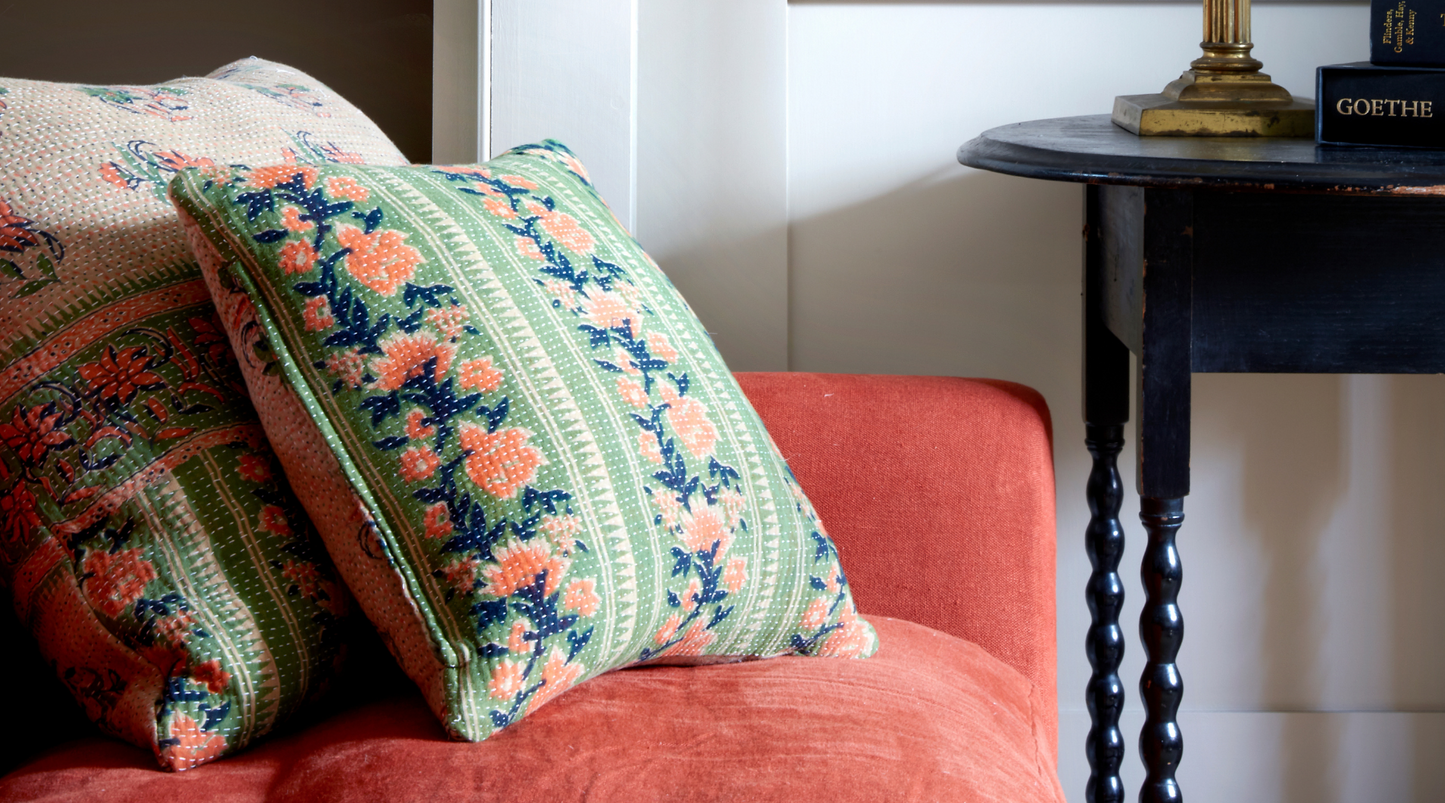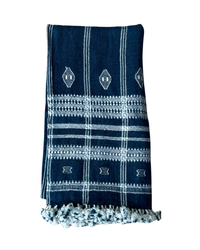
I’m so delighted that Lonika Chande has kindly agreed to share her insights and I get to delve into her world of decorating with vintage textiles. Lonika founded her award-winning studio in 2017 - with her expressive use of colour, pattern and texture quickly setting her apart; earning her House & Garden’s inaugural The List Award for Design Talent in 2020 and a regular place on its prestigious Top 100 Designers list. Known for her joyful interplay of antique and contemporary pieces, Lonika creates interiors that feel layered, soulful and utterly unique.
Her love of vintage has deep roots: an itinerant childhood in a family of creatives – with a painter mother and antiques-dealer grandmother – nurtured her eye for characterful treasures. After training in Architectural Interior Design at The Inchbald School of Design and gaining experience at leading London firms, she has built a practice celebrated for its technical rigour and playful, ever-evolving design signature.
How do you go about incorporating vintage textiles into your work?
We use antique textiles a lot in our projects. As art: we frame smaller pieces or fragments as decorative art and hang them above bedside tables. We stretch larger pieces, like Suzanis or embroidered panels across a board and then hang these above a sofa or a sideboard.
We also often rework antique textiles into cushions. They make a newly designed home feel homely, grounded and as though it has come together over many years. We have also made draught curtains out of some of the larger pieces we have been lucky enough to find.
How best to display them?
I prefer antique textiles displayed simply, either stretched and unframed, or stretched and framed in a slim wooden tray frame.
Where to start when using vintage textiles? Can they inspire a whole scheme?
They are often the starting point for our schemes. I love the originality that they bring to a scheme and how they usually inform the colour palette. Etsy is a great resource for small vintage pieces. However, I’ve picked up some of my favourites from antique shops and fairs on my travels. I’ve just come back from a trip to Tangier in Morocco and found this incredible stack of original Fez embroideries in extraordinarily rich purply reds, and oranges tucked away in the back of an antique shop. One may have made its way home with me!
Unique creative ways of working with vintage textiles?
It’s important not to be too precious with them. Vintage textiles make great tablecloths and napkins. One year I made napkin rings from pretty vintage ribbon for the table at Christmas.
Why do you love working with vintage textiles?
I love the story that the pieces tell, the history behind them. They bring soul to a space. I love the imperfect nature of them, the sun-faded patches and patterns, or the hand-darned tear.
Why would you recommend others to work with vintage textiles?
Vintage textiles make a space feel layered, considered and homely. They are one-of-a-kind finds, and so in turn make a space feel truly unique.
What would your top 3 tips be for anyone looking to start using vintage textiles
- Start small, with a cushion and build up to larger pieces.
- You can back an antique textile with sturdier plain linen to make it stronger to use.
- Vintage Indian kantha quilts are a good place to start when building a collection. Each one is unique, so they immediately bring a sense of individuality and character to a space. They are made from layers of old saris, and are patterned, but wonderfully soft in colour and in feel. They are washable and really are so versatile. I’ve used them as table cloths, rugs, throws, bedspreads and they make beautiful cushions too.





















































